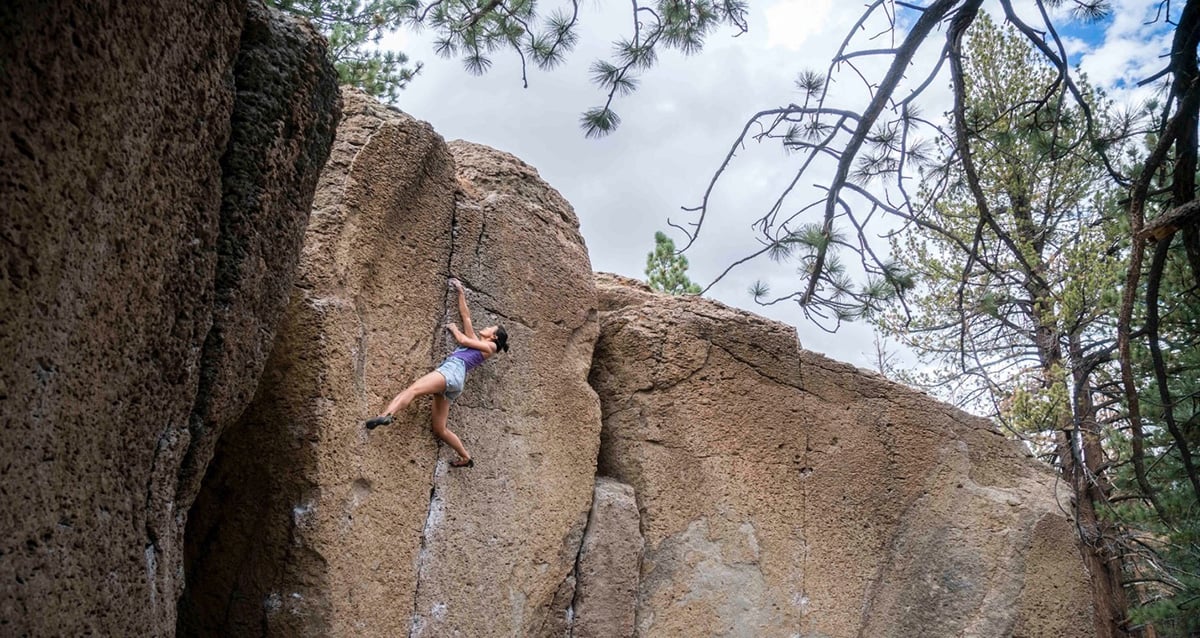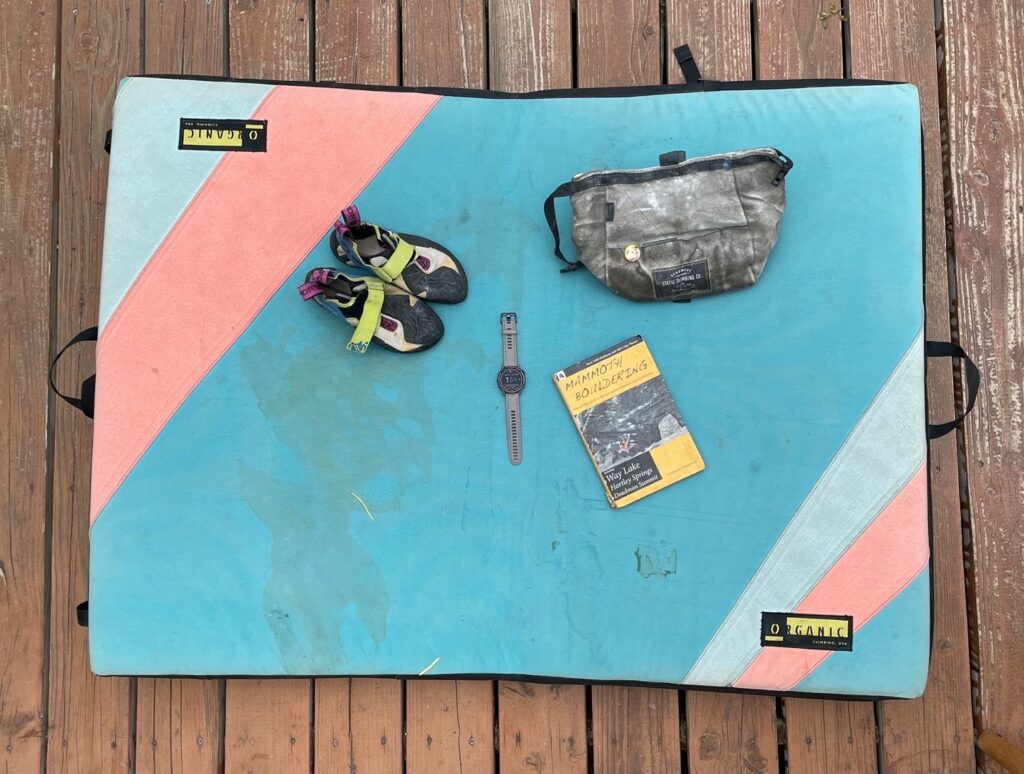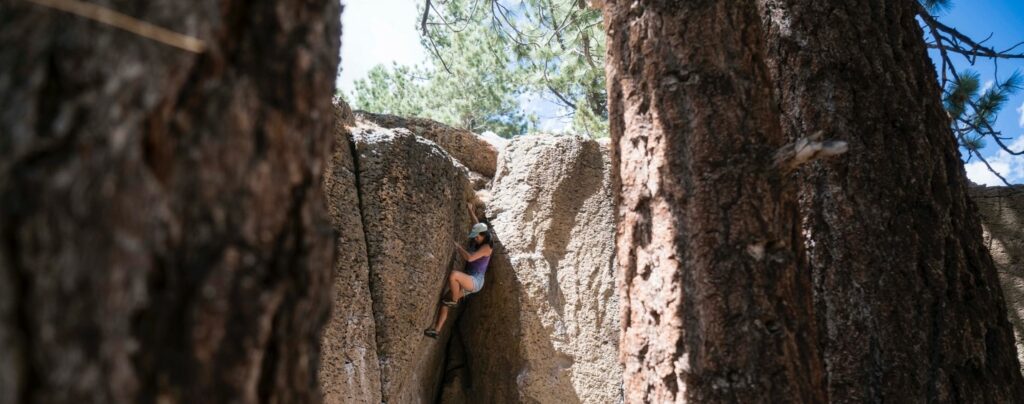
Bouldering: What You Need to Get Started
By Shelma Jun
Photos by Vikki Glinksii
From being added to the Olympics this year to Free Solo winning an Oscar for the best documentary of 2019, it’s clear that climbing has become a mainstream sport. Compounded with our post-COVID desires to spend more time in the outdoors, there’s no better time to get into it.
Climbing is the perfect sport for folks of all ages and athletic prowess — it’s low impact on joints, has puzzle-solving characteristics, and its difficulty is easily adjusted. And unlike team sports, you and your friends do not all need to be climbing at the same level to have a good time together.
A great place to start is bouldering, which is climbing smaller rocks (often anywhere from 5- to 15’ high) without a rope. It has the lowest barrier to entry for new climbers as it requires less equipment and less technical safety knowledge than roped climbing.
Here are the things you need to get started:

A Local Gym
With climbing gyms now in almost every metropolitan area in the U.S., climbing is much more accessible than most outdoor-specific sports. I recommend you start at a gym to see how you like the movement and challenges of climbing.
Climbing Shoes (Can Be Rented)
Almost every gym has climbing shoe rentals, so you don’t have to invest in a pair until you decide that you want to make it a regular thing. Climbing shoes have special soles made with extra-sticky rubber for more friction and a special shape in order to maximize your ability to stand up with confidence on small footholds. The shoes should fit snugly, with your toes pushed right up against the front of the shoe but not so much to cause extreme discomfort.
Chalk Bag or Bucket (Can Be Rented)
Climbers use chalk on their hands to reduce moisture on their fingertips and palms, mostly from sweating, and to increase the friction on their skin so it’s easier to hold on to holds — whether they are plastic ones in the gym or rock holds outside.
Fēnix® 6S Multisport GPS Watch from Garmin
The fēnix 6S watch tracks indoor and outdoor boulder problems based on their grades. Grades track the difficulty of rock climbs. If or when you decide to try bouldering outdoors, in addition to tracking what boulder problems you’ve climbed, the fēnix 6S can also track mileage and connect you to GPS maps to ensure you’re headed in the right direction. Super important!
Ready to check out some real rock boulders outside? Here are some additional items you’ll need:
Guidebook or App
While some climbers seek out first ascents, most of us stick to climbing problems that have been established by other climbers. These climbs are often congregated closely together in a climbing area with an assortment of difficulty. A guidebook or guide app will provide information about the geological and climbing history of an area and have a list of established climbs with photos and grades.
Crash Pad (Can Be Rented)
While the gym floor will have large industrial pads covering the floor to cushion your fall, when you head outside, this extra cushion must be carried with you. A standard-sized crash pad is 3-by-5’ and folds in half with backpack straps to make it easier to carry with you. Depending on the characteristics of the bouldering problem, (i.e., how tall it is, how level the ground is, etc.), you can put several together to cover a larger fall zone or stack them on top of each other for more cushion.
Friends
Bring your friends and have them spot you to make bouldering as safe as possible. Plus, to be honest, shouts of encouragement sometimes make the moves a tiny bit easier.






